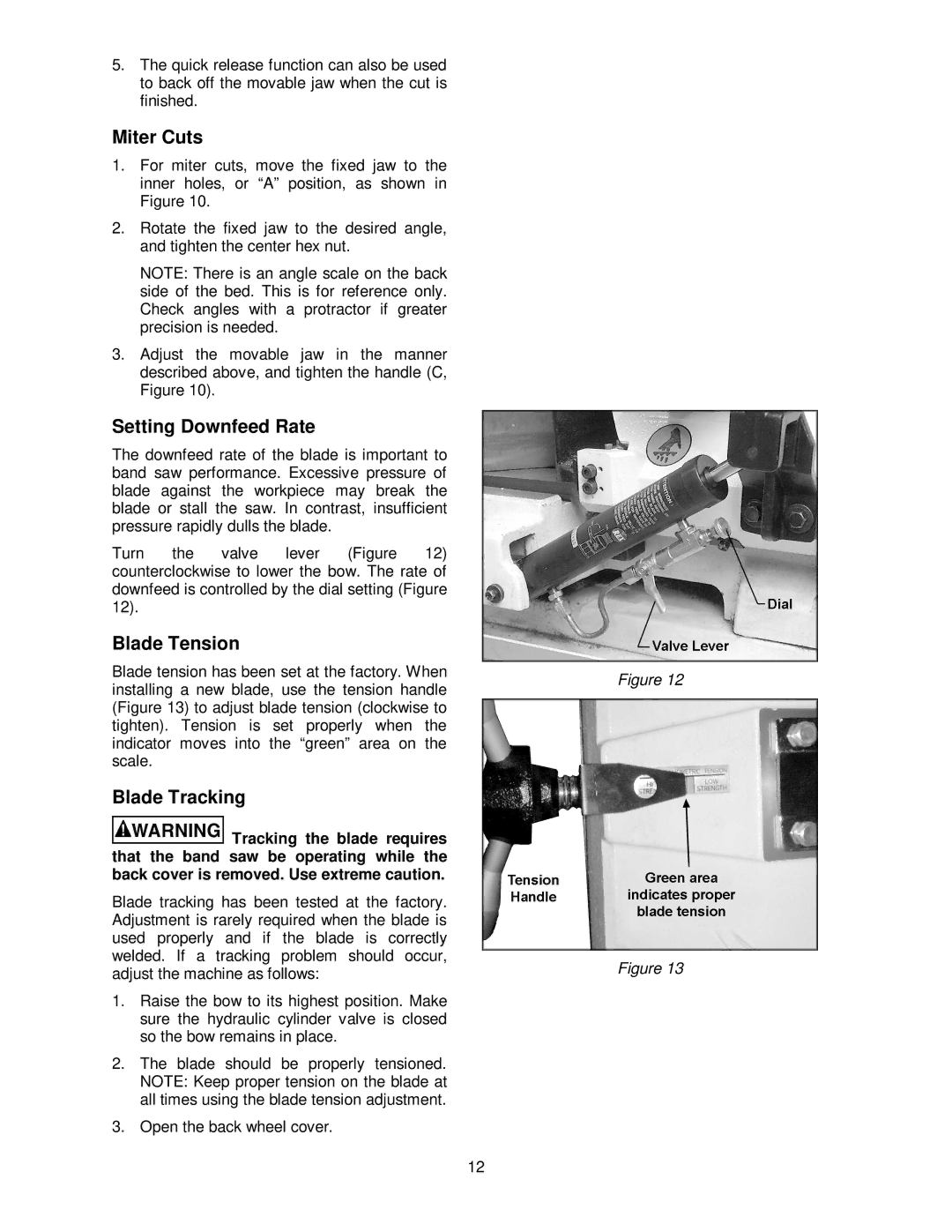
5.The quick release function can also be used to back off the movable jaw when the cut is finished.
Miter Cuts
1.For miter cuts, move the fixed jaw to the inner holes, or “A” position, as shown in Figure 10.
2.Rotate the fixed jaw to the desired angle, and tighten the center hex nut.
NOTE: There is an angle scale on the back side of the bed. This is for reference only. Check angles with a protractor if greater precision is needed.
3.Adjust the movable jaw in the manner described above, and tighten the handle (C, Figure 10).
Setting Downfeed Rate
The downfeed rate of the blade is important to band saw performance. Excessive pressure of blade against the workpiece may break the blade or stall the saw. In contrast, insufficient pressure rapidly dulls the blade.
Turn the valve lever (Figure 12) counterclockwise to lower the bow. The rate of downfeed is controlled by the dial setting (Figure 12).
Blade Tension
Blade tension has been set at the factory. When installing a new blade, use the tension handle (Figure 13) to adjust blade tension (clockwise to tighten). Tension is set properly when the indicator moves into the “green” area on the scale.
Blade Tracking
![]() Tracking the blade requires that the band saw be operating while the back cover is removed. Use extreme caution.
Tracking the blade requires that the band saw be operating while the back cover is removed. Use extreme caution.
Blade tracking has been tested at the factory. Adjustment is rarely required when the blade is used properly and if the blade is correctly welded. If a tracking problem should occur, adjust the machine as follows:
1.Raise the bow to its highest position. Make sure the hydraulic cylinder valve is closed so the bow remains in place.
2.The blade should be properly tensioned. NOTE: Keep proper tension on the blade at all times using the blade tension adjustment.
3.Open the back wheel cover.
Figure 12
Figure 13
12
